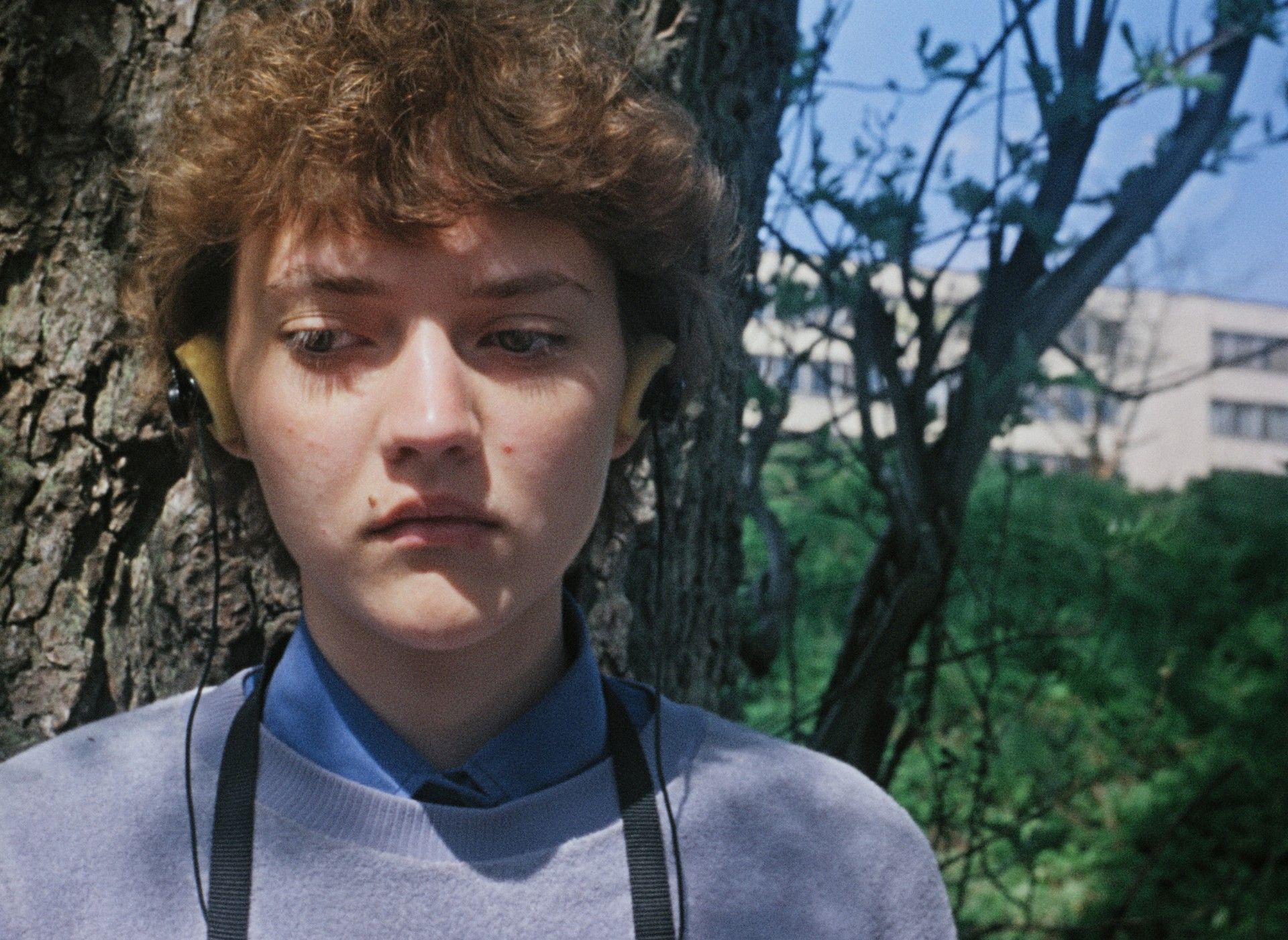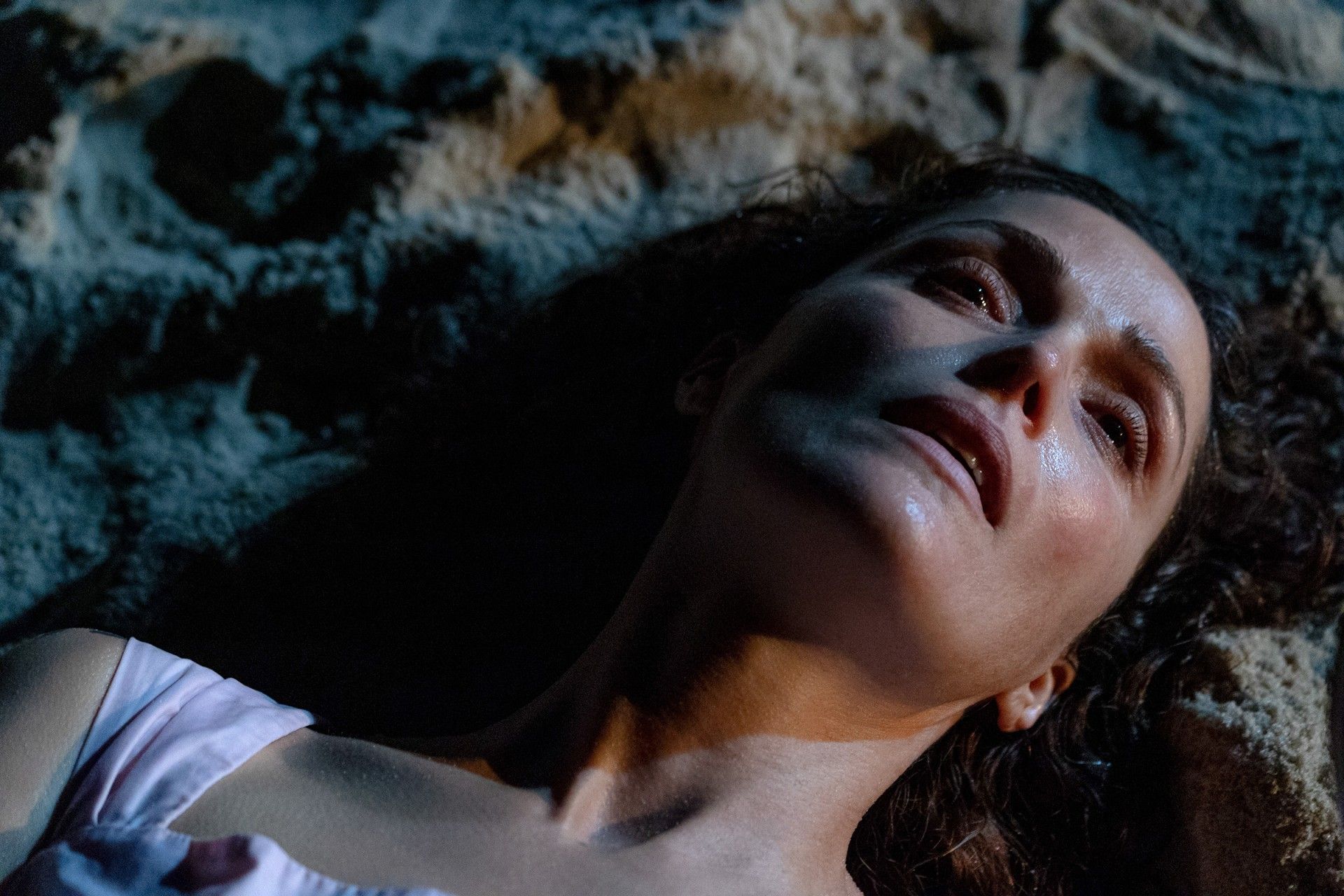That’s Their Business: Smile at Last (1985) and If I Had Legs I’d Kick You (2025) In Conversation

This year at the Berlinale, two films forty years apart use extreme close-ups to explore morbid ideas about substance abuse, dangerous sexual impulses, irresponsible parenthood, and anxious adolescence. Although Smile at Last (1985) and If I Had Legs I’d Kick You (2025) are quite different in terms of form and content, both are characterised by an emphasis on the lead actors’ performance, as well as the directors’ uncommonly empathetic approach toward their subjects.
With Smile at Last (1985), which played across both the Berlinale Classics and Generation 14plus sections, Estonian directors Leida Laius and Arvo Iho created an emotionally sophisticated portrait of a sensitive young girl named Mari (Monika Raide, in her only film role), who is sent to an orphanage by her widowed alcoholic father because he can’t be bothered to raise her. While Mari is on her way to the institution, a group of women save her from a near assault, landing them all in jail. When Mari arrives, who is there to greet her but her assailant Robi (Hendrik Toompere Jr) and a group of mean girls who mercilessly bully her? Robi is the suave, handsome leader of the troupe, and Mari finds herself navigating her complex romantic feelings toward him.
The remote orphanage grants the kids quite a bit of freedom as much as it sequesters them away from society; the few adults featured in Smile at Last are almost all irresponsible drunks and criminals. The orphanage is not exactly Neverland, but the children stay up past their bedtime to watch Charlie Chaplin films and dance around to Bob Dylan, two activities which would be strictly forbidden under the threat of swift violence in most cinematic orphanages. The children also taunt each other, swiping each other’s passports and reading aloud from each other’s journals. Smile at Last achieves a unique authenticity through Laius’ decision to cast non-professional actors. Tellingly, During the post-screening Q&A with Raide, multiple audience members asked her if the kids were actually orphans because they were so convinced by their performances.
Many of the children protest their repetitive meal options through a hunger strike, but not Mari, who must reassert her own position in the pecking order many times over. 'That’s their business,’ becomes Mari’s signature line of rebellion when people question her reasoning, repeated throughout the film. According to Raide, the directors wanted to show the kids drinking alcohol, but the Soviet government strictly prohibited it. Laius and Iho made a film that quietly moves against the status quo, blending the personal and the political.. Laius intentionally chose to shoot Smile at Last as far away from Moscow as possible, while remaining within the borders of the Soviet Union, to avoid any authorities meddling with her vision of an environment with no adults in the room where kids are allowed to make mistakes. ‘This was one of the first perestroika movies,’ Raide remarked when discussing the political context of the film. ‘It showed that no matter what, young people will always find ways to be together.’ The inclusion of American music and purposeful framing of the disobedient children as heroes are directly insubordinate messages against the Soviet government.
Mari’s wide, sad eyes and curly mop of reddish hair often fill the screen in a close up. Her eyes never lose their quiet defiance, nor does Laius’ camera ever stop framing Mari with extraordinary care. Laius exhibits the courage to trust both audience and performer to not shy away from uncomfortable feelings of malaise. Smile at Last would not work without Raide’s natural performance, which evokes feelings of loneliness and a repressed longing for connection with only a shifting of her eyes. ‘We tried to keep it as authentic as possible,’ Raide noted when asked about her experience working with Laius on creating Mari.

Whereas Smile at Last centres around the behaviour of an adolescent, American independent filmmaker Mary Bronstein centres her Competition entry If I Had Legs I’d Kick You (2025) on Linda (Rose Byrne), a mother whose copious amounts of stress cause her to frequently act out as a teenager might. Linda’s husband is constantly traveling for work, leaving Linda primarily responsible for their mysteriously sick young daughter, who remains out of frame for most of the film, but whose voice is almost constantly heard. Feeling more isolated and overwhelmed with each scene, Linda’s sanity begins to unravel. Not only does a large, flooded hole manifest itself in her apartment’s ceiling, causing her to move into a run-down motel, but one of Linda’s mentally unwell patients also flees her office in the middle of a session. Bronstein also populated her film with nontraditional actors, like rapper A$AP Rocky and comedian Conan O’Brien, bolstering a sense of authentic reality. Celebrity cameos occasionally have a tendency to feel shoehorned into certain narratives, but here Rocky and O’Brien slip seamlessly into their respective roles of confidante and therapist/father figure.
In lieu of judging Linda for her subsequent, increasingly alarming behaviours, including but not limited to substance abuse, Bronstein radically empathises with her protagonist. Bronstein’s morally murky look at motherhood and mental illness will not be embraced by everyone. Mainstream American audiences specifically may have a difficult time digesting notions about motherhood that are profoundly negative, but Bronstein never makes compromises on her specific artistic vision. The film’s anxiety-inducing tone doesn’t alienate me from Linda’s world but draws me in closer to it, although I will admit I don’t have children and don’t want them. Watching If I Had Legs I’d Kick You is a jarring, stressful experience not because Bronstein is looking to pointlessly emulate a hip style, but because Linda’s life is jarring and stressful. Bronstein and cinematographer Christopher Messina execute this suffocating tone through her use of close up compositions on Byrne, which make up nearly half of the film’s runtime. Keeping the frame so close and so often on Byrne drives home her constant feelings of suffocation and dread when faced with the responsibility of parenting.
Byrne’s strong comedic background in films like Bridesmaids (2011) allows her to bring an unexpected levity to a role that might have otherwise been mired in melodrama in such close quarters. 'Everybody loves Rose. By choosing her…People have such good will towards her, it’s going to allow me to go further into the dark because we care about her going into it. She’s in every scene, and I knew that stylistically I wanted to be very close. So I knew I needed to have an excellent technical actress, who is also able to have people be on her side,” Bronstein told the Berlinale during a red carpet interview when asked about casting her lead actress at the premiere of the film.
Laius and Bronstein– while different in terms of genre– are both uncompromising filmmakers who deserve places in the larger film canon. Smile at Last first played at the Berlinale in 1987, where it won the UNICEF prize, despite its ban in East Germany. Although Laius’ name is well known in Estonian households to this day, with Smile at Last specifically regarded as a classic, the film has remained underseen by Western audiences, an omission the new 4K restoration by the Estonian National Archives presented at the Berlinale will hopefully rectify. After volunteering for the Red Army during World War II, Laius began her artistic career as an actress at the Estonian Theatre Institute, before shifting her focus to directing in the early 1960s at the state film school in Moscow.
Many years later and on the other side of the globe, Bronstein’s only other feature Yeast (2008), another sweaty, panic-inducing thrill ride following an intensely codependent female friendship in close quarters, was a particularly strong entry into the mumblecore canon. Shot by an up-and-coming cinematographer named Sean Price Williams on DV and co-starring a little known actress named Greta Gerwig, Yeast premiered at South by Southwest in 2008, but struggled to find distribution. Though Bronstein’s feature debut has recently been reappraised by arthouse audiences across the globe, Bronstein has still not received the credit she deserves for her stylistic contributions to the mid-2000s independent film scene in New York City—namely, her instinct to lean into as opposed to shy away from icky feelings of discomfort. Both Yeast and If I Had Legs I’d Kick You are tangibly disgusting, tightly controlled character explorations. One early scene in which Linda eats the cheese that has fallen off her pizza, shot in extreme close-up, struck me as the perfect summation of Bronstein’s ethos: a gross, stressful moment that could be grabbed from any woman’s life behind closed doors. Like Laius, Bronstein also began her career as an actress, and notably stars in both of her own features. Without their own acting work, the performances Laius and Bronstein receive from their lead actresses may not have been as honest.
In my screening of Smile at Last, I was pleased to find myself surrounded by teenage girls, thanks to the programmers’ wise decision to slot the film in the Generation 14plus section in addition to the Classics sidebar. Not only that, but the audience was demonstrably compelled by the film, which resulted in an illuminating post-screening Q&A with Raide. Engaging the next generations of world citizens with genuinely challenging cinema and providing them with the space to discuss it is a goal that festivals like the Berlinale should champion. Often, events this prestigious are gatekept for the benefit of a select handful of people, usually adults, and gestures such as this one open the conversation up to a wider audience. Expanding the discussion to include empathetic, uncompromising female filmmakers is one significant intention that motivates me in my own work, and it was refreshing to see that reflected at the Berlinale.